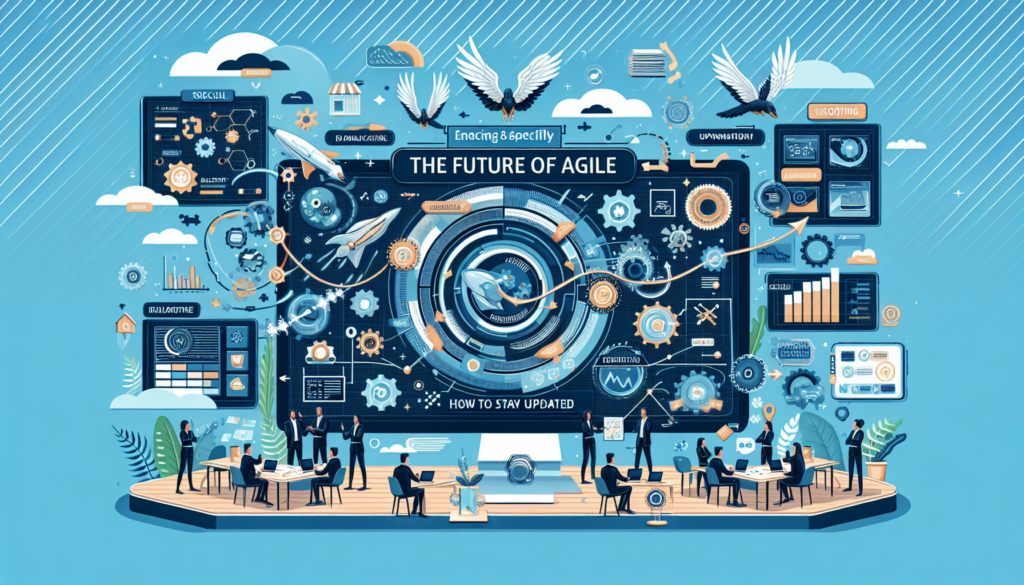Over the past two decades, Agile methodology has become an essential component for project management, particularly in software development. However, its rapid adoption and constant technological advancement mandate an ongoing evolution of Agile practices and principles. In this context, it is imperative for professionals and organizations to stay current with emerging trends to maintain the relevance and efficiency of their processes. This article explores the latest trends in Agile and how professionals can adapt and thrive in the changing landscape of project management.
Agile Evolution: From Framework to Organizational Culture
Agile has transcended beyond a framework to become an organizational culture that fosters innovation and flexibility. Adopting this methodology has proven to be a competitive differentiator. Agile transformation not only impacts working methods but also mindset and the structure of the organizations.
Digital Transformation and Agile Scaling
As organizations continue their journey towards digital transformation, scalable Agile approaches like SAFe (Scaled Agile Framework), LeSS (Large Scale Scrum), and DaD (Disciplined Agile Delivery) have gained popularity. These frameworks are designed to allow the application of Agile practices in large teams and complex projects, where coordination among multiple teams and alignment with the company’s strategic goals are required.
Agile and DevOps: A Symphony in Progression
The integration of Agile with DevOps is redefining development and operation cycles. DevOps strengthens the principles of Agile by automating and optimizing the workflow, from coding to deployment and monitoring, promoting continuous and high-quality delivery.
Emerging Trends in Agile
The evolution of Agile shows no signs of slowing down. Here are some of the main trends shaping the future of this methodology:
Artificial Intelligence and Machine Learning
The rise of artificial intelligence (AI) and machine learning (ML) has made an impact on Agile project management. These technologies offer advanced insights into resource allocation, process optimization, and outcome predictions. For example, through predictive analytics, it’s possible to anticipate project bottlenecks and risks, allowing for a proactive response.
Hybrid Methodologies
Combining Agile with other project management methods, such as Waterfall or Prince2, is leading to hybrid methodologies that seek to benefit from the best of each approach. These hybrids are particularly focused on highly regulated industries or projects with stricter requirements.
Agility in Product Management
Agile is increasingly being integrated into product management, impacting the creation of minimum viable products (MVPs) that can be tested and improved iteratively. This approach allows for a quicker response to customer feedback and changing market conditions.
The Sustainability of Agile
A critical point of reflection in the Agile community is its long-term sustainability. Attention is being paid to avoid team burnout and to foster a healthy balance between delivery speed and work quality. Sustainable Agile practices aim to improve team well-being while maintaining consistent performance.
Staying Updated in Agile
Continuous Education and Certifications
For Agile professionals, continuous education is essential. Certifications such as Certified ScrumMaster (CSM), SAFe Agilist, or PMI-ACP (Agile Certified Practitioner) are recognized and valued in the industry.
Participation in Communities of Practice
Communities of practice, both online and in-person, offer a valuable space for learning and collaboration. Attending webinars, workshops, and conferences specialized in Agile is an excellent way to stay up to date with trends and best practices.
Case Study Analysis
Analyzing case studies on the implementation of Agile methodologies allows for an understanding of challenges and solutions in real business contexts and promotes a deep understanding of how to apply advanced theories in practical situations.
Benchmarking and Continuous Improvement
Comparing processes and outcomes with those of other organizations can provide significant insights and guide own practices towards continuous improvement. This benchmarking should be done judiciously, adapting the learnings to the specific circumstances and culture of each company.
Agile is not static; it is a working ethos that continues to mature with each iteration and project. At the forefront of this evolution are professionals who not only adopt Agile principles but also contribute to its development through embracing new technologies, techniques, and collaborative approaches. By staying educated, connected, and reflective, Agile professionals can expect to not only remain relevant but also to advance and influence the future of this dynamic and fundamental methodology.

